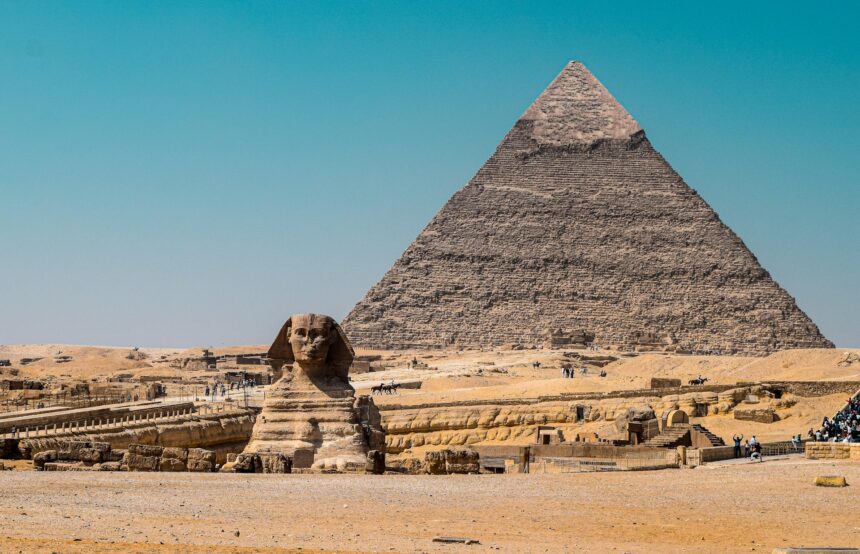Historical landmarks are windows into the past. They offer us a glimpse of the world as it was, shaped by the people and events that defined different eras. For history buffs and travel enthusiasts, these landmarks provide an engaging way to connect with history and culture. This blog post will take you on a journey through time, exploring how historical landmarks have evolved from ancient civilizations to the present day.
Early Historical Landmarks: Foundations of Civilization
The earliest historical landmarks date back to ancient civilizations, where they served as symbols of power, spirituality, and community. Structures like the Pyramids of Giza in Egypt and the ziggurats of Mesopotamia are prime examples. These monuments were not only architectural feats but also reflections of the societies that built them.
The Pyramids of Giza
Constructed around 2580–2560 BCE, the Pyramids of Giza are among the most iconic structures in human history. They were built as tombs for Pharaohs, reflecting the Egyptians’ beliefs in the afterlife and their architectural prowess. The Great Pyramid, the largest of the three, was the tallest man-made structure for over 3,800 years.
The Ziggurats of Mesopotamia
Ziggurats were massive terraced structures erected in the ancient Mesopotamian valley, primarily between 2100 BCE and 600 BCE. These temples served religious purposes and were dedicated to the gods of the cities. The Ziggurat of Ur is one of the best-preserved examples, showcasing the ingenuity and religious devotion of the Sumerians.
Medieval and Renaissance Landmarks: The Rise of New Styles
The medieval and renaissance periods brought about significant advancements in architecture and design. Landmarks from these eras often reflect the socio-political and religious changes of the times.
Gothic Cathedrals
The Gothic architectural style emerged in the 12th century and reached its zenith in the 13th century. Famous examples include Notre-Dame de Paris and Chartres Cathedral. These structures are characterized by their towering spires, flying buttresses, and intricate stained glass windows. They were not just places of worship but were also designed to inspire awe and demonstrate the power of the church.
Renaissance Palaces
The Renaissance period, which began in the 14th century, saw a revival of classical learning and wisdom. This is reflected in the architecture of the time. The Palazzo Vecchio in Florence and the Doge’s Palace in Venice are notable examples. These landmarks not only showcase the architectural brilliance of the Renaissance but also serve as symbols of the political and cultural power of their respective cities.
The Age of Exploration: New Horizons
The Age of Exploration, spanning the 15th to the 17th centuries, led to the discovery of new lands and the expansion of existing ones. This period saw the creation of new landmarks and the transformation of old ones.
Colonial Architecture
As European powers expanded their empires, they left behind a legacy of colonial architecture. Structures like the Castillo San Felipe de Barajas in Colombia and the Fortaleza Ozama in the Dominican Republic stand as testaments to the strategic and military prowess of the colonial powers. These fortifications were built to protect colonies from invaders and reflect the blend of local and European architectural styles.
Trade and Cultural Exchange
The Silk Road and maritime trade routes facilitated cultural exchanges that influenced the architecture of many landmarks. The Taj Mahal in India, completed in 1653, is a prime example. While it is an Islamic mausoleum, its architecture incorporates elements from Persian, Ottoman, Indian, and Islamic styles, making it a symbol of cultural fusion.
Modern Era Landmarks: Symbols of Progress
The Industrial Revolution and subsequent technological advancements ushered in a new era of landmark construction. The modern era reflects cultural, historical, and architectural significance.
The Eiffel Tower
The Eiffel Tower in Paris was initially met with criticism but has since become one of the most recognizable landmarks in the world. Designed by Gustave Eiffel, it symbolizes industrial progress and innovation. The tower’s iron lattice structure was pioneering at the time and remains a marvel of engineering.
The Statue of Liberty
Statue of Liberty is a gift from France to the United States. It stands as a symbol of freedom and democracy. Located on Liberty Island in New York Harbor, the statue has welcomed millions of immigrants arriving by sea and remains an enduring symbol of hope and opportunity.
Modern Skyscrapers
The 20th and 21st centuries have seen the rise of skyscrapers as symbols of economic power and architectural innovation. The Burj Khalifa in Dubai, completed in 2010, is the tallest building in the world. Its design incorporates cutting-edge technology and sustainable practices, reflecting the aspirations of modern urban development.
The Future of Landmarks: What Lies Ahead
As we look to the future, it’s fascinating to speculate on how current landmarks may evolve and what new structures will capture the imagination of future generations.
Sustainability and Innovation
With growing awareness of climate change, future landmarks will likely prioritize sustainability. Green buildings, like the Bosco Verticale in Milan, which integrates thousands of trees and plants into its structure, are examples of this trend. Future landmarks may incorporate even more advanced sustainable technologies, making them not only architectural marvels but also beacons of environmental responsibility.
Technological Integration
The integration of technology into architecture will shape the landmarks of tomorrow. Smart buildings with advanced AI systems, interactive displays, and augmented reality experiences could become commonplace. These innovations will enhance the visitor experience and offer new ways to engage with history and culture.
Conclusion
The evolution of historical landmarks offers a fascinating glimpse into the past while also providing insights into the future. From the ancient pyramids to modern skyscrapers, each landmark tells a unique story about the people and societies that built them. They stand as testaments to human ingenuity, creativity, and resilience.
For history buffs and travel enthusiasts, exploring these landmarks is more than just sightseeing. It’s an opportunity to walk in the footsteps of those who came before us and to appreciate the rich tapestry of human history. As we move forward, let us continue to cherish and preserve these landmarks, ensuring that their stories endure for generations to come.
Frequently Asked Questions (FAQs)
Q1: What is the significance of Gothic cathedrals in architectural history?
Answer: Gothic cathedrals are significant for their towering spires, flying buttresses, and intricate stained glass windows, reflecting the architectural and cultural power of the church during the Middle Ages.
Q2: How did the Renaissance influence architecture?
Answer: The Renaissance saw a revival of classical learning and wisdom, leading to architectural masterpieces like the Palazzo Vecchio and Doge’s Palace, which symbolize the political and cultural power of their cities.
Q3: What impact did the Age of Exploration have on architecture?
Answer: The Age of Exploration led to the creation and transformation of landmarks, including colonial architecture blending local and European styles and structures influenced by cultural exchanges on trade routes.
Q4: What do modern landmarks like the Eiffel Tower and the Statue of Liberty symbolize?
Answer: The Eiffel Tower symbolizes industrial progress and innovation, while the Statue of Liberty stands as a symbol of freedom and democracy.
Q5: What trends are shaping the future of architectural landmarks?
Answer: Future landmarks will likely prioritize sustainability and technological integration, featuring green practices and advanced technologies to enhance visitor experiences and promote environmental responsibility.







